Related Research Articles
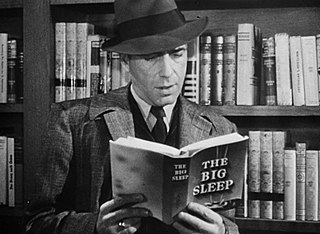
Philip Marlowe is a fictional character created by Raymond Chandler who was characteristic of the hardboiled crime fiction genre. The genre originated in the 1920s, notably in Black Mask magazine, in which Dashiell Hammett's The Continental Op and Sam Spade first appeared. Marlowe first appeared under that name in The Big Sleep, published in 1939. Chandler's early short stories, published in pulp magazines such as Black Mask and Dime Detective, featured similar characters with names like "Carmady" and "John Dalmas", starting in 1933.
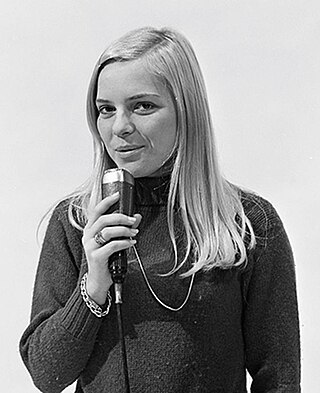
Isabelle Geneviève Marie Anne Gall, known professionally as France Gall, was a French yé-yé singer. In 1965, at the age of 17, she won the tenth edition of the Eurovision Song Contest with the song "Poupée de cire, poupée de son", representing Luxembourg. Later in her career, she became known for her work with singer-songwriter Michel Berger, whom she married in 1976. Her most successful singles include "Résiste", "Ella, elle l'a" and "Évidemment".
Rituals is an American soap opera that aired in first-run syndication from September 10, 1984, to September 6, 1985. Developed by Gene Palumbo, Clifford Champion, Joyce Corrington and John William Corrington, it was loosely based on a novel of the same name by Charlene Keel. Distributed by Telepictures, 260 25-minute episodes were produced over its single-season run.

The Chocolate Soldier is an operetta composed in 1908 by Oscar Straus based on George Bernard Shaw's 1894 play, Arms and the Man. The German language libretto is by Rudolf Bernauer and Leopold Jacobson. It premiered on 14 November 1908 at the Theater an der Wien.
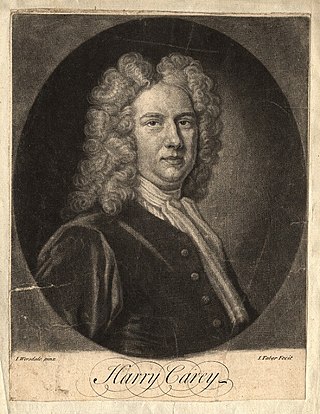
Henry Carey was an English poet, dramatist and composer. He is remembered as an anti-Walpolean satirist and also as a patriot. Several of his melodies continue to be sung today, and he was widely praised in the generation after his death. Because he worked in anonymity, selling his own compositions to others to pass off as their own, contemporary scholarship can only be certain of some of his poetry, and a great deal of the music he composed was written for theatrical incidental music. However, under his own name and hand, he was a prolific songwriter and balladeer, and he wrote the lyrics for almost all of these songs. Further, he wrote numerous operas and plays. His life is illustrative of the professional author in the early 18th century. Without inheritance or title or governmental position, he wrote for all of the remunerative venues, and yet he also kept his own political point of view and was able to score significant points against the ministry of the day. Further, he was one of the leading lights of the new "Patriotic" movement in drama.
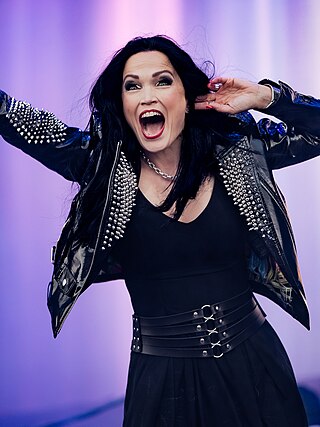
Tarja Soile Susanna Turunen-Cabuli, known professionally as Tarja Turunen or simply Tarja, is a Finnish heavy metal singer, best known as the former lead vocalist of Nightwish.

Sadko is an 1898 opera in seven scenes by Nikolai Rimsky-Korsakov. The libretto was written by the composer, with assistance from Vladimir Belsky, Vladimir Stasov, and others. Rimsky-Korsakov was first inspired by the bylina of Sadko in 1867, when he completed a tone poem on the subject, his Op. 5. After finishing his second revision of this work in 1891, he decided to turn it into a dramatic work.
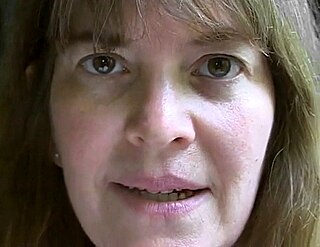
Marilyn Crispell is an American jazz pianist and composer. Scott Yanow described her as "a powerful player... who has her own way of using space... She is near the top of her field." Jon Pareles of The New York Times wrote: "Hearing Marilyn Crispell play solo piano is like monitoring an active volcano... She is one of a very few pianists who rise to the challenge of free jazz." In addition to her own extensive work as a soloist or bandleader, Crispell is also known as a longtime member of saxophonist Anthony Braxton's quartet in the 1980s and '90s.

Ana María Martínez is a Puerto Rican soprano.
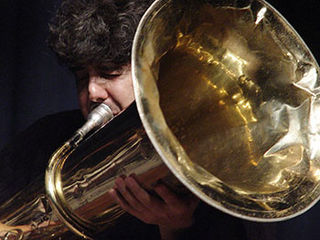
Marcus Rojas is an American tubist from New York City.

Lulu on the Bridge is a 1998 American romantic-mystery drama film written and directed by author Paul Auster and starring Harvey Keitel, Mira Sorvino, and Willem Dafoe. The film is about a jazz saxophone player whose life is transformed after being shot. After discovering a mysterious stone, he meets and falls in love with a beautiful aspiring actress, but their happiness is cut short by a series of strange, dreamlike events. The film was screened in the Un Certain Regard section at the 1998 Cannes Film Festival.
Tani Tabbal is a jazz drummer who has worked with Roscoe Mitchell, David Murray, and Cassandra Wilson.

Michèle Mercier is a French actress. In the course of her career she has worked with leading directors like François Truffaut, Jean-Pierre Melville, Jacques Deray, Dino Risi, Mario Monicelli, Mario Bava, Peter Collinson and Ken Annakin. Her leading men have included Marcello Mastroianni, Vittorio Gassman, Jean-Paul Belmondo, Jean Gabin, Charles Aznavour, Robert Hossein, Charles Bronson, Tony Curtis and Charlton Heston. She has appeared in over fifty films, and is best known for her starring role in Angelique, Marquise des Anges.
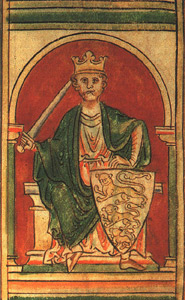
Richard Cœur-de-lion is an opéra comique, described as a comédie mise en musique, by the Belgian composer André Grétry. The French text was by Michel-Jean Sedaine. The work is generally recognised as Grétry's masterpiece and one of the most important French opéras comiques. It is based on a legend about King Richard I of England's captivity in Austria and his rescue by the troubadour Blondel de Nesle.

A hag is a wizened old woman, or a kind of fairy, witch, or goddess having the appearance of such a woman, often found in folklore and children's tales such as "Hansel and Gretel". Hags are often seen as malevolent, but may also be one of the chosen forms of shapeshifting deities, such as The Morrígan or Badb, who are seen as neither wholly benevolent nor malevolent. The word hag can also be synonymous for a witch.
James Emery is an American jazz guitarist. He grew up in Willoughby, Ohio and Shaker Heights, Ohio. Emery plays archtop guitar, semi-acoustic guitar, electric guitar, and soprano guitar.
In the 1990s in jazz, jazz rap continued progressing from the late 1980s and early 1990s, and incorporated jazz influence into hip hop. In 1988, Gang Starr released the debut single "Words I Manifest", sampling Dizzy Gillespie's 1962 "A Night in Tunisia", and Stetsasonic released "Talkin' All That Jazz", sampling Lonnie Liston Smith. Gang Starr's debut LP, No More Mr. Nice Guy, and their track "Jazz Thing" for the soundtrack of Mo' Better Blues, sampling Charlie Parker and Ramsey Lewis. Gang Starr also collaborated with Branford Marsalis and Terence Blanchard. Groups making up the collective known as the Native Tongues Posse tended towards jazzy releases; these include the Jungle Brothers' debut Straight Out the Jungle and A Tribe Called Quest's People's Instinctive Travels and the Paths of Rhythm and The Low End Theory.

Gustav-Adolf Mossa was a French illustrator, playwright, essayist, curator and late Symbolist painter.
References
- ↑ Newman, Andy (20 December 2009). "She's Making It up as She Goes Along". The New York Times.
- ↑ "About Mossa". Mossa Bildner. 30 April 2010. Retrieved 1 March 2019.
- ↑ "Michele Blondel Prelait-Point de Rosee-Lactaires Delicieux".
- ↑ "Mossa Bildner's "Harvest of My Tongue"". YouTube . Archived from the original on 2021-12-21. Retrieved 24 October 2018.
- ↑ Schulz, Matt (June 4, 2014). "Philip Gibbs, Karl Berger, and Mossa Bildner - After the Storm". Squidco. Retrieved 1 March 2019.
- ↑ Zambelli, Bruno (June 14, 2015). "The world premiere of Life is Strange". The Hatch. Retrieved 1 March 2019.
- ↑ "A Vida é Estranha (2015)".
- ↑ Discogs website, After the Storm